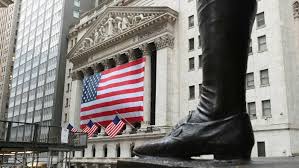Interview with Senior Wall Street Fund Manager (3)

A SaaS profitability model that can have scale effects (economy of scale) must do two things. things, retention after 2-3 quarters can be steadily maintained at 25-30%+; meanwhile each new Cohort's Both user retention performance is better than the previous Cohort. If you can't do both, the bigger the business grows the more money you burn and the less marginal effect you have (more to say that this also includes the (Blue Apron has been the key to many unicorns never becoming profitable).
The difference with HFG is that the company focuses on natural growth, preferably slower, but each cohort must be at least flat compared to the previous one, and at least 25% retention in June to ensure "quality growth".
Until the earnings data appear, the machine cannot understand the importance of this retention curve, nor can it understand the importance of Blue Apron's and The two HFG companies are similar in business but completely different in nature. When HFG finally turned a profit at the end of 2019, the machine finally recognized the strength of the company and started chasing the stock, pushing the Big rise.
What companies do you follow in the technology, consumer and industrial sectors, in the short and medium to long term, respectively?
I am less interested in short-term volatility and more interested in the undervaluation and mispricing of companies in the medium and long term. In some cases, short-term data doesn't give the machine enough context, resulting in a machine that "sees the forest for the trees". Miscalculations that either overestimate a company's short-term setbacks or underestimate its long-term growth potential.
Let's use Kornit (KRNT) as a case study: Kornit is a manufacturer of 3D garment printing equipment. The maker. before 2018 mainly did downstream ready-to-wear pattern printing for consumer t-shirt startups, then Gradually, it began to focus on moving upstream into the industrial garment sector, doing fabric pattern processing. The machine can see a major short-term improvement in Kornit's profit growth rate beyond 2019, but completely ignores the fact that the company is maintaining the Long-term high growth potential.
This is because the machine knows what it sees but doesn't know why. Kornit's growth comes as companies in the global textile industry have, over the past two years, made a concerted effort to learn from Zara, with an emphasis on shortening the time it takes to get to the top of the market. Shorten cycle lead-time, and Kornit's 3D Fabric Print technology just happens to solve the industry's most critical pain point. With a market share in the single digits, Kornit has a high enough ceiling to sustain high growth for many years. .
4: It all sounds logical. But what are some of the items that you couldn't understand before and then opted into later? Or, have there been projects that have upended your preconceptions?
There are plenty of high-return opportunities in the market, but I only take one ladleful of the weak water and don't expect to eat all the fish in the pond. Many projects and industries, such as biotechnology or military, I will intentionally avoid because I do not have a relevant professional background, so I will try my best to I'm not envious of the fact that I've been able to catch an opportunity that I can hold within the circle of competence. I don't envy other funds even if they have made big money.
Investment is still to do what you are good at and can grasp the initiative of the battlefield, the so-called victorious soldier first wins and then seeks the battle. Otherwise, even if you are lucky enough to make short-term money, once the company's operating environment changes, it's hard to have enough confidence to decide whether or not to invest in the company. Should you cut out of the market, or keep adding to it.
Talking current events: what happened to Chinese stocks and crude oil?
1, Chinese stocks have a series of shorting events, what do Wall Street fund managers think? What advice would you give to investors in Chinese stocks?
Shorting in the US market is very well developed and shorting (including high-profile shorting) is ongoing and not just against Chinese stocks. Most hedge funds have active short selling as an integral part of their investment strategy. This includes my work with the Wall Street Journal, which published a report on December 14, 2015, questioning North American Water Group's (371) HK) article "Chinese Water Accounting is Slippery When Wet", which exposed the management's aggressive accounting policies, generated a return of over 40% in three weeks.



